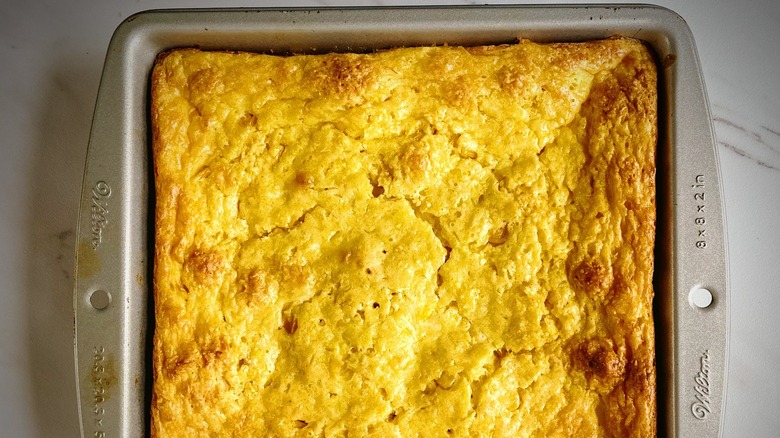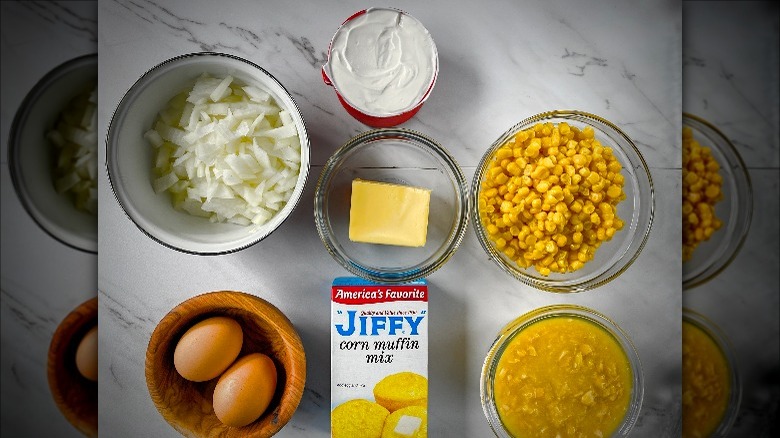Use 2 Types Of Kernels For The Best Corn Casserole
What is the difference between cornbread and corn casserole? In a nutshell, the former is firmer. To expand a bit, cornbread has more of a cake-like consistency, while corn casserole is softer and spongier — the kind of dish you eat with a spoon, not with your hands. Both cornbread and corn casserole share many of the same ingredients, though, and developer Ashley Schuering even starts out her corn casserole recipe with a box of corn muffin mix. As she explains, "I love using store-bought cheats." While her brand of choice is Jiffy, a similarly-sized package of another store-bought mix would also work. In addition to the corn muffin mix, Schuering's recipe also calls for two types of canned corn.
The first can you'll open for this is plain corn kernels, the kind that comes packed in water. You won't need the water, so you'll just drain it away or save it for another purpose (adding it to a soup, perhaps). These corn kernels give the casserole some texture as well as some visual appeal from the colorful yellow bits. The second kind of corn you'll be using (or third if you count the cornmeal in the corn muffin mix) is creamed corn, which makes for a richer and moister casserole.
Canned creamed corn doesn't contain dairy products
We'll admit that Ashley Schuering's corn casserole recipe is hardly vegan-friendly, as it includes butter, eggs, and sour cream or yogurt. One ingredient that is plant-based, despite its name, is creamed corn. While homemade creamed corn recipes may call for the addition of dairy, the canned kind consists of little more than whole corn kernels floating in "milk" composed of the insides of other corn kernels. The mixture may also include a little salt, sugar, and starch for thickening, but no actual moo juice is contained in the can. For that reason, it's inadvisable to substitute homemade creamed corn for canned creamed corn in this casserole, since the two products are simply too different.
If you don't have creamed corn on hand, but you do have a spare can of corn kernels, it's easy to make a substitute that can be used in this recipe without changing the flavor or texture too much. All you need to do is dump the whole can of kernels in a blender or food processor along with ⅓ of the liquid, then add a tablespoon of flour or a teaspoon and a half of cornstarch. Blend the corn until it's still a little chunky but the liquid and flour have been thoroughly incorporated into the mixture. If you do over-blend and puree the corn, though, there's no need to worry, since you'll still have the kernels from that other can to provide texture for the casserole.

